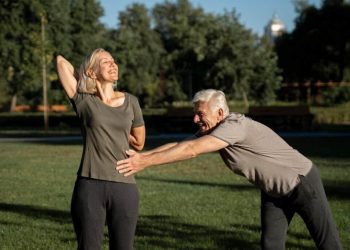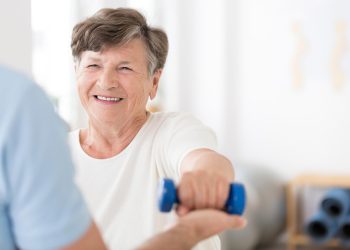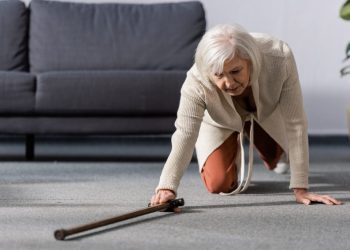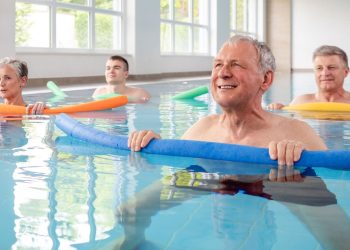Tai Chi walking combines the ancient wisdom of Tai Chi with the simple act of walking, creating a gentle yet powerful practice perfectly suited for older adults. This mindful movement technique offers seniors a low-impact way to improve balance, strength, and overall wellbeing without the risks associated with more strenuous exercise.
Why Tai Chi Walking is Ideal for Older Adults
As we age, maintaining physical fitness becomes increasingly important yet simultaneously more challenging. Traditional exercise programs often feel too intense or carry injury risks that make seniors hesitant to participate. Tai Chi walking bridges this gap beautifully.
Unlike conventional walking, Tai Chi walking emphasizes slow, deliberate movements with focused attention on body mechanics, breathing, and weight transfer. This mindful approach transforms a simple walk into a meditative practice that strengthens both body and mind. For seniors, this means engaging in meaningful exercise without joint strain, cardiovascular stress, or the risk of moving too quickly and losing balance.
The practice is infinitely adaptable. Whether you’re recovering from surgery, managing chronic conditions, or simply looking to maintain your independence, Tai Chi walking can be modified to meet your current abilities while still providing substantial benefits. There’s no competition, no keeping up with others, and no pressure to perform at any particular level.
Understanding the Fundamentals
Before diving into the practice, it’s helpful to understand what makes Tai Chi walking different from regular walking. The key principles include:
Mindful Weight Transfer: Rather than walking automatically, you consciously shift your weight from one foot to the other, paying attention to how your body moves through space. This heightened awareness improves proprioception, which is your body’s ability to sense its position and movement.
Rooted Stance: Each step begins from a grounded, stable position. You’re never rushing or off-balance. This rooted quality helps prevent falls and builds confidence in your movements.
Breath Coordination: Breathing is synchronized with movement. Typically, you inhale as you prepare to step and exhale as you complete the weight transfer. This coordination calms the nervous system and improves oxygen flow throughout the body.
Relaxed Alertness: Your body remains soft and relaxed while your mind stays alert and present. This combination reduces unnecessary muscle tension while maintaining the focus needed for safe movement.
Senior-Specific Modifications
One of Tai Chi walking’s greatest strengths is its adaptability. Here are specific modifications that make the practice safer and more accessible for older adults:
Use of Support: There’s no shame in using assistance when needed. Many seniors benefit from practicing near a wall, using a chair for balance, or even holding a cane. As your confidence and strength grow, you can gradually reduce reliance on these supports. Some practitioners find that practicing with a walking partner provides both physical support and social connection.
Shortened Stride Length: Forget about taking large steps. Tai Chi walking often involves smaller steps than regular walking, which provides better balance and control. For seniors, this modification is particularly important as it reduces the risk of overextension and strain.
Reduced Duration: Begin with just five to ten minutes of practice. Unlike conventional exercise where you might push through fatigue, Tai Chi walking honors your body’s signals. As your stamina builds over weeks and months, you can gradually extend your practice time.
Seated Variations: For those with significant mobility limitations, Tai Chi walking principles can be practiced while seated. You can simulate the weight transfer by shifting from one hip to the other, coordinating with breath, and maintaining the same mindful quality of movement.
Slower Pace: Even by Tai Chi standards, seniors may benefit from moving more slowly. This isn’t a limitation but rather an opportunity for deeper awareness and more thorough muscle engagement at a safe, controlled pace.
Essential Safety Tips
Safety should always be your top priority. Follow these guidelines to ensure your Tai Chi walking practice remains beneficial and injury-free:
Choose Your Environment Carefully: Practice on flat, even surfaces free from obstacles. Avoid slippery floors, cluttered areas, or uneven terrain until you’ve built substantial confidence and skill. Indoor spaces with good lighting are ideal when starting out.
Wear Appropriate Footwear: Thin-soled, flexible shoes with good traction are ideal. Avoid thick-soled shoes that reduce your ability to feel the ground beneath you, as this sensory feedback is important for balance.
Clear Medical Approval: Before beginning any new exercise program, consult with your healthcare provider. This is especially important if you have conditions affecting balance, bone density, cardiovascular health, or joint integrity.
Start with Shorter Sessions: Begin conservatively with brief practice sessions. It’s better to practice for five minutes daily than to overdo it once and become discouraged or injured.
Stay Hydrated: Keep water nearby and drink before you feel thirsty. Dehydration can affect balance and cognitive function.
Practice Mindful Progression: Resist the urge to advance too quickly. Mastery of basic movements provides a stable foundation for more complex practices later.
Know Your Limits: Some days you’ll feel stronger than others. Honor your body’s signals and adjust your practice accordingly. Pain is always a sign to stop and reassess.
Specific Benefits for Seniors
The advantages of Tai Chi walking for older adults extend far beyond simple exercise. Research and clinical experience have documented numerous benefits that directly address common concerns of aging:
Fall Prevention: This may be the most significant benefit. Falls represent a major health risk for seniors, often leading to serious injuries, loss of independence, and decreased quality of life. Tai Chi walking directly addresses the factors that contribute to falls by improving balance, leg strength, and proprioception. The practice trains your body to make smooth, controlled movements and develops the reflexes needed to recover from small stumbles before they become falls.
Enhanced Balance and Coordination: The slow, deliberate weight shifts challenge your balance system in a safe, controlled manner. Over time, this training improves your stability during all daily activities, from reaching for items on high shelves to navigating uneven sidewalks.
Increased Leg Strength: The sustained, controlled movements of Tai Chi walking build strength in the quadriceps, calves, and hip muscles. Stronger legs mean greater independence in activities like climbing stairs, getting up from chairs, and walking longer distances.
Improved Cardiovascular Health: While gentle, Tai Chi walking still provides cardiovascular benefits. The sustained movement increases circulation, helps regulate blood pressure, and supports heart health without the strain of vigorous exercise.
Reduced Joint Pain: The low-impact nature of Tai Chi walking makes it suitable even for those with arthritis. The gentle movements can actually help reduce joint stiffness and pain while improving range of motion. The emphasis on proper alignment also reduces unnecessary stress on joints.
Better Cognitive Function: The mindful aspect of Tai Chi walking engages your brain. The combination of coordinating movement with breath, maintaining balance, and staying present provides mental exercise that may help maintain cognitive sharpness and potentially reduce dementia risk.
Stress Reduction: The meditative quality of the practice activates the parasympathetic nervous system, promoting relaxation and reducing stress hormones. Many seniors report feeling calmer and more centered after practice.
Enhanced Sleep Quality: Regular practice of Tai Chi walking can improve sleep patterns. The combination of gentle physical activity, stress reduction, and improved circulation contributes to more restful sleep.
Social Connection: When practiced in group settings, Tai Chi walking provides valuable social interaction, reducing isolation and loneliness that many seniors experience.
Increased Confidence: Perhaps most importantly, Tai Chi walking helps seniors feel more confident in their bodies. This psychological benefit translates into greater willingness to engage in other activities and maintain an active lifestyle.
Getting Started: A Simple Practice
Here’s a basic Tai Chi walking sequence appropriate for seniors:
Beginning Position: Stand with feet hip-width apart, knees slightly soft (not locked), and arms hanging naturally at your sides. Take several deep breaths, feeling your feet firmly on the ground.
The First Step: Slowly shift your weight onto your right foot, feeling it become heavier while your left foot becomes lighter. Lift your left foot just slightly off the ground, move it forward a comfortable distance (perhaps just six to twelve inches), and gently place the heel down first. Gradually transfer your weight onto the left foot while your right foot becomes light.
Continue: Repeat this process, alternating feet. Remember to breathe naturally, coordinating your breath with your movement. Move slowly enough that you could stop at any point without losing balance.
Duration: Practice for five to ten minutes initially, or even less if needed. Quality matters far more than quantity.
Building a Sustainable Practice
Consistency is key to experiencing the full benefits of Tai Chi walking. Aim to practice three to five times per week, even if only for short sessions. Many seniors find that practicing at the same time each day helps establish a routine.
Consider joining a local Tai Chi class or senior center program. Learning from an experienced instructor ensures proper form and provides community support. Many communities offer classes specifically designed for seniors, and some are even covered by insurance programs.
Track your progress not through how far or fast you walk, but through how you feel. Notice improvements in your balance during daily activities, changes in your sleep quality, or increased confidence in your movements.
Tai Chi walking offers seniors a time-tested path to better health, improved balance, and enhanced quality of life. Its gentle approach respects the realities of aging bodies while providing genuine physical and mental benefits. By starting slowly, practicing consistently, and honoring your body’s wisdom, you can develop a sustainable practice that supports your independence and wellbeing for years to come.
Remember, it’s never too late to begin. Whether you’re in your sixties, eighties, or beyond, Tai Chi walking can meet you where you are and help you move forward with grace, strength, and confidence. The journey of a thousand miles begins with a single, mindful step.






